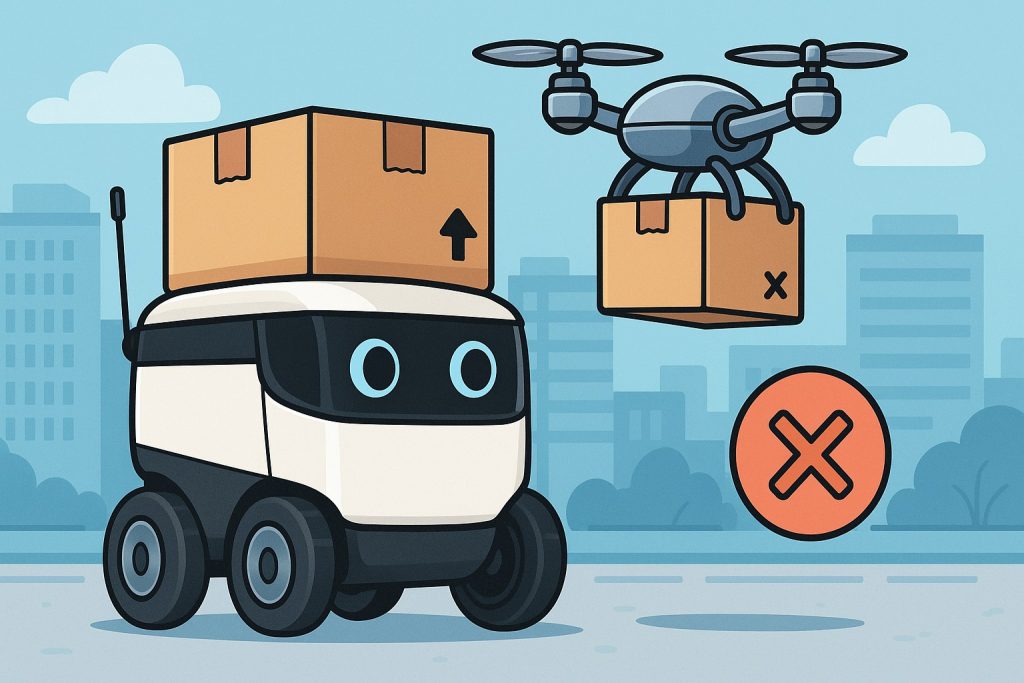In the age of instant gratification and on-demand services, the demand for fast, efficient, and contactless delivery has skyrocketed. Enter delivery robots—smart machines reshaping how goods and meals reach our doors. From sidewalks to skies, robots are becoming the new face of last-mile delivery. But how do they work, and what makes them so effective?
What Are Delivery Robots?
Delivery robots are autonomous or semi-autonomous machines designed to transport packages, groceries, and meals directly to customers. They range from small wheeled bots that navigate sidewalks to drones that fly above traffic. These robots are equipped with GPS, cameras, sensors, and artificial intelligence to move safely through urban environments.
Types of Delivery Robots
1. Ground-Based Robots
- Small, cooler-sized vehicles on six wheels
- Travel sidewalks or pedestrian zones at walking speed
- Use cameras, radar, and LIDAR to detect obstacles
- Popular companies: Starship Technologies, Amazon Scout, Yandex Rover
2. Autonomous Delivery Vehicles (ADVs)
- Larger, car-sized bots for street navigation
- Operate in bike lanes or low-speed roads
- May require remote human supervision
- Companies: Nuro, Kiwibot, Serve Robotics
3. Aerial Drones
- Quadcopters or fixed-wing drones
- Deliver lightweight items by air
- Ideal for rural or hard-to-reach areas
- Companies: Zipline, Wing (by Alphabet), Amazon Prime Air
How the Process Works
- Order Placement – A customer places an order via a mobile app or website.
- Robot Dispatch – The nearest robot is loaded and sent to the delivery location.
- Navigation – The robot uses maps, GPS, and real-time obstacle detection to move.
- Arrival Notification – Customers receive alerts when the robot arrives.
- Secure Handoff – The robot opens via app verification or QR code, allowing the recipient to collect their order.
Advantages of Robot Delivery
- Contactless and hygienic, especially valuable post-COVID
- Environmentally friendly, often electric or solar-powered
- Cost-efficient for businesses over time
- 24/7 availability, no breaks or shift limits
- Reduces traffic and congestion in urban centers
Challenges and Limitations
- Limited payload capacity (most ground bots carry 5–10 kg)
- Weather sensitivity, especially for drones
- Navigation issues in crowded or uneven environments
- Vandalism and theft risks
- Legal and regulatory hurdles in many regions
Where Are Robots Delivering Today?
- Universities and campuses – Controlled environments are perfect testing grounds
- Urban neighborhoods – Pilot programs in cities like San Francisco, London, and Tallinn
- Remote villages – Drones are used to deliver medicine and vaccines in places like Ghana and Rwanda
Glossary
- Last-mile delivery – _The final step in the delivery process, from a hub to the end customer.*
- LIDAR – _A sensing method using lasers to measure distance and build a 3D map of surroundings.*
- Autonomous – _Able to operate without human intervention, based on software and sensors.*
- Payload – _The total weight a robot can carry while performing its task.*
Conclusion
Robotic delivery is no longer science fiction—it’s already a practical, scalable solution for the challenges of modern logistics. As technology improves and regulations adapt, we can expect to see even more bots and drones zipping around, bringing not just speed and efficiency, but a cleaner, smarter way to deliver the things we need.


